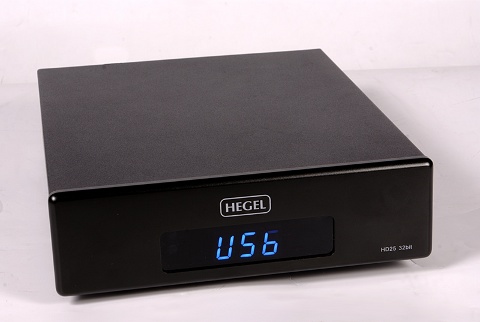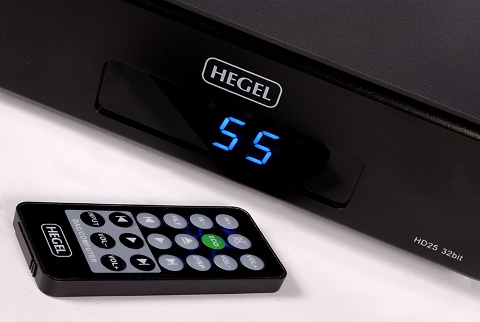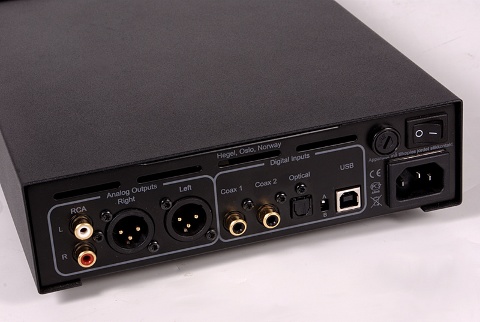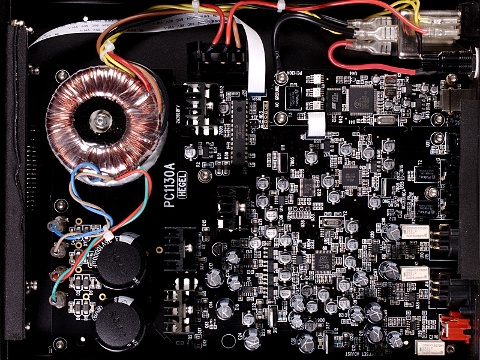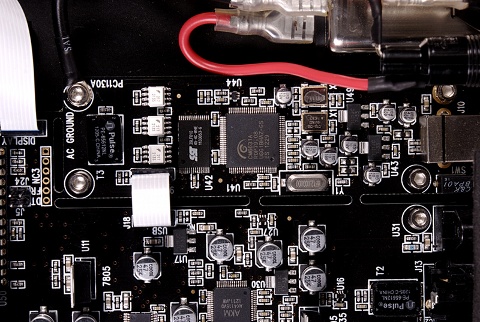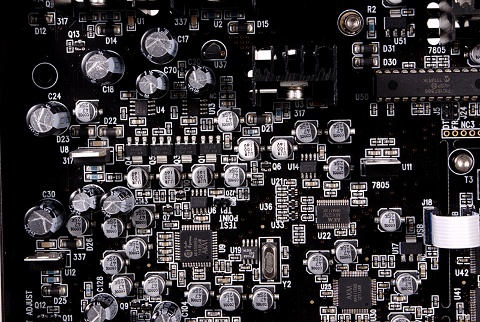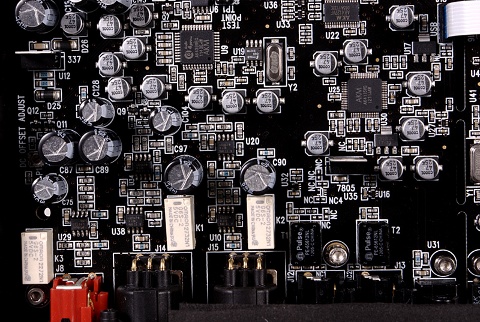about Audio, High Fidelity
& Home Entertainment technologies
pid: 607-2025/10/01 (v1.2)
Privacy Policy
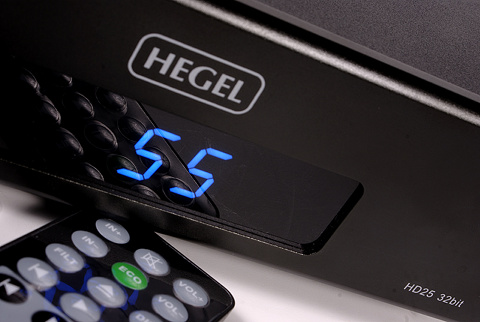
With respect to its appearance, HD25 follows what one would call the classic Hegel line, with a "half-width" (210mm) chassis, in black color, dominated by a large, easy to read from a distance, display. Obviously, the DAC is designed to remain in On mode for long periods of time (since the power switch is located on the back and there is no stand-by mode). The front panel does not include any other switch or knob and this happens, in principle, because the device is accompanied by a small (and rather cheap-looking) remote from where you can adjust the output level, select the input and the digital filter and activate the mute switch. However, HD25 is somewhat differentiated in terms of its user interface, offering a pressure-sensitive front surface to act as an input selector. For the user it is enough to touch twice the front panel to move from one input to another, an interesting twitch at the usability level. Hegel also has hidden two functions which are activated as secondary keys on the remote control. One of these offers the possibility of dimming the screen (so it is not intruding during low light conditions) and the second, the possibility of instantaneous displaying the sample rate in which the current input is locked.
HD25's front panel is very simple, with a centrally mounted large display offering an indication of the selected input and the level (during its adjustment). The user can select between inputs simply by tapping the surface twice.
In terms of connectivity, HD25 offers a rather standardized package, with two coaxial and one optical S/PDIF digital input, a USB port and both single ended and balanced analog outputs. Coaxial inputs are implemented with conventional RCA plugs but the company says that the circuit is designed so that its input impedance is 75 Ohm as required by the relevant standard. Something that is missing from the HD25 is a headphone output. It seems that an increasing number of audiophiles are using headphones these days and, at this price range and given its competition, this is something that probably should be included.
The majority of the functions available are activated through the compact remote control which can be used for other Hegel devices too.
The user has at his disposal two coaxial and one optical digital input, a USB port and single ended/balanced analog output pairs. The small switch selects the mode of USB connection, the “B” position allowing up to 32bit/192kHz streaming.
Management of the USB data is assigned to a Cmedia processor, a chip that can perform asynchronous streaming with sample rates up to 32bit/192kHz. HD25 can be operated either in a basic, PnP, mode without the need of a driver in Windows installations, for sample rates up to 24/96, or with a special driver that allows for up to 32/192 streaming. Output to the digital interface is galvanically isolated through small transformers.
Main digital processing in the HD25 is performed via three Asahi Kasei chips. The trio includes the AK4115 digital interface, the AK4127 sample rate converter and -finally- the AK4399 d/a converter, which operates at 32bit. Of these three components, the role of the SRC seems to need some clarification. Hegel does not mention that the converter performs any kind of upsampling (all AK DAC chips can handle all standard sample rates, anyway) so the usefulness of a sample rate converter at this point could be associated with the re-clocking the company seems to carry out, but without giving more details, one cannot say for sure. The use of an SRC to re-clock and reduce the jitter in the incoming digital signal is -of course- neither unknown nor uncommon practice. Hegel, finally, seems to have made use of two AK4399 embedded functions, the possibility of adjusting the output level (in the case of the HD25 in 100 steps through the remote) and the choice of two digital filters of which one is a standard steep low pass while the second one offers less pre-ringing.
HD25 appears to be a carefully implemented product. Power supply is based on a toroidal transformer and two 10.000uF capacitors followed by local regulators.
USB port management is based on a Cmedia chip (center). Left part of the photo shows the transformers used to isolate the digital interface stage.
The analog output stage appears to be quite different for the balanced and the single ended outputs. In the case of the latter, a trio of LME49720 op amps per channel is used in the role of adder/buffer and linear phase analog filter stages, while the former uses OPA827 op-amps.
The power supply seems to be meticulously designed, including a toroidal transformer, two 10.000uF electrolytic capacitors and quite a large number of local regulators.
The digital part of the HD25 includes a standard digital interface (AK4115, bottom right), a sample rate converter (AK4127 just above AK4115) and the AK4399 d/a converter (below, near the center).
This is the analog output stage. The photo shows one of the three op-amps for the single ended outputs (LME47920, bottom left) and the four op-amps for the balanced outputs (OPA827).

